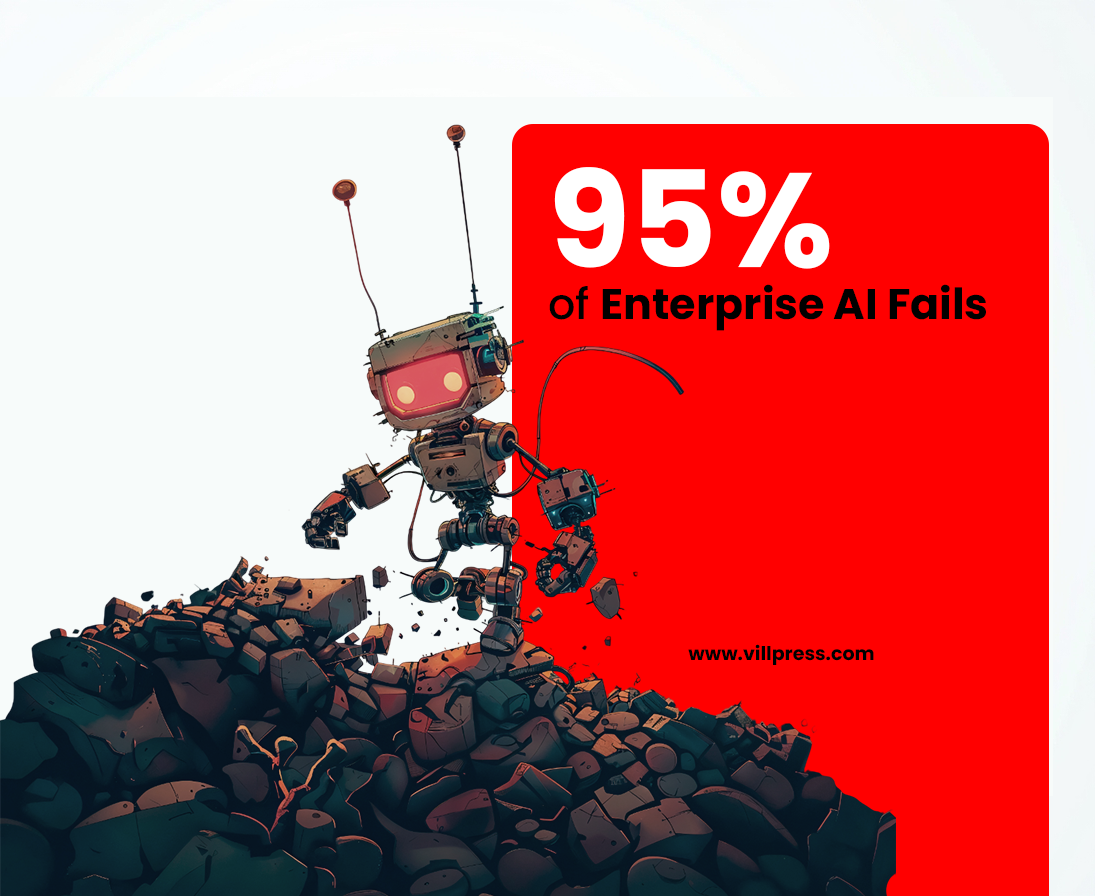According to the recent MIT “GenAI Divide: State of AI in Business 2025” study, a staggering 95% of generative AI enterprise pilots fail to produce any measurable impact on profit and loss (P&L), not because the technology is flawed, but due to poor alignment with workflows and business needs
These failures aren’t limited to a few sectors—hundreds of pilot programs across industries yielded minimal transformation, despite massive investments (upwards of $35–40 billion in 2025 alone)
That said, the 5% of projects that work are consistently successful by focusing on one problem, running smart pilots, and executing with clarity and precision
The 5% That Get It Right: What They’re Doing Differently
Here’s the strategic playbook that separates the winners from the rest:
1. Focus on One Expensive, High-Impact Problem
These organizations don’t scatter their efforts. Instead, they tackle one P&L-critical issue. For instance, Walmart improved efficiency in freight logistics, while CarMax used AI to summarize review content—delivering real momentum, not scattered initiatives.
2. Build Cross-Functional, Workflow-Integrated Teams
Success isn’t isolated in innovation labs—AI is embedded directly into operations. Banks like JPMorgan bring engineers and lawyers together; manufacturers align data scientists with factory operators to ensure AI works where work happens.
3. Partner Strategically, Don’t Reinvent the Wheel
Shell teamed up with C3.ai and Microsoft; Sanofi forged partnerships with Exscientia, Atomwise, and Owkin. These aren’t one-off pilots—they’re collaborations with proven players to apply AI where it matters.
4. Start Narrow, Then Scale
BMW piloted defect detection in one plant before rolling it out globally. Walmart tested logistics optimization regionally before national adoption. One win, that others can copy.
5. Prove ROI Early
Early measurable wins build momentum. JPMorgan’s AI chopped 360,000 contract-review hours annually. These aren’t hypothetical gains; they’re real, tracked impacts.
6. Keep Humans in the Loop
AI helps, but doesn’t replace. Legal teams still oversee AI-assisted reviews. Factory inspectors still validate AI findings. Human leadership remains central for trust and adoption.
7. Measure Results, Then Broadcast Them
Transparency matters. Shell publicly highlights savings; Colgate touts 80% forecast accuracy in supply chains. Clear, shared wins drive cultural buy-in.
Lessons from the MIT Study and the Field
- Workflow alignment, not flashy tech, determines success, most failures occur when AI doesn’t adapt to existing processes
- Back-office tasks yield better ROI than sexy sales/marketing pilots, yet many companies still allocate budgets to areas with minimal returns
- External AI partners enable higher success rates than in-house builds, two-thirds succeed vs. just one-third of internal efforts.
- Shadow AI is flourishing, while only 40% of firms officially deploy LLM tools, over 90% of employees use tools like ChatGPT informally, showing demand and flexibility gaps.
- The root cause is organizational, not technical, MIT calls it a “learning gap”: AI systems fail because they don’t retain feedback, lack contextual awareness, and stay brittle over time.
Snapshot
| Topic | Key Insight |
|---|---|
| Failure Rate | 95% of enterprise AI pilots yield zero ROI; success tied to alignment and focus |
| High-Impact Pilots | Winners start with one critical problem and scale from success |
| Team Structure | Cross-functional integration trumps isolated innovation labs |
| Partnerships | External collaborators significantly boost success rates |
| Human + AI Synergy | AI empowers, not replaces—keeping humans engaged is essential |
| Measurable Wins | Proven ROI early on is critical to momentum and scalability |
| Organizational Readiness | Success is cultural and procedural, not just technical |







